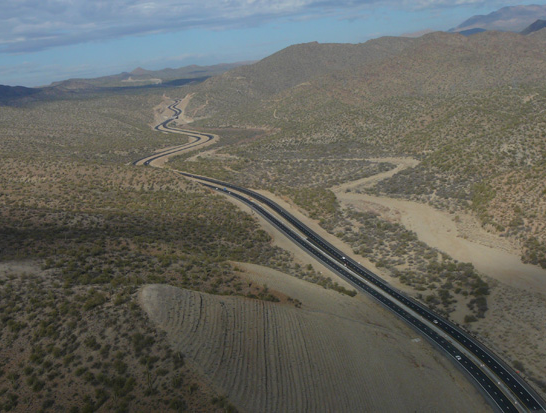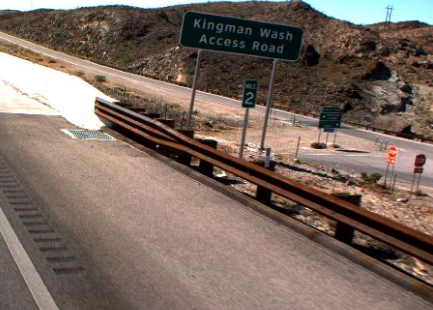Why are US 93 mileposts in backward order?
Why are US 93 mileposts in backward order?

If you think about it, US 93 is a bit odd.
Don't get us wrong, it's a fine highway. But it does have one particular quirk: Its mileposts go up as you to north to south, rather than the usual south to north.
As we mentioned in a post about exit signs some time ago, there is a general rule for how the milepost on highways are supposed to go. As a quick recap, highways start at mile marker "0" at the western or southern state line or terminus and increase as you head east or north.
Then there is US 93.
Despite what we just said, milepost 0 is not at its junction with US 60 in Wickenburg, but rather where it enters from Nevada.
We'll be honest: Why the highway is numbered like this is extremely hard to pin down. We don't have a firm answer, but there are two good intertwined guesses that rise to the top as we look at its history.
The first involves the fact that the stretch between Hoover Dam and Kingman was not originally US 93. It was US 466, a road comissioned in 1934 that ran from Morro Bay, California, to Kingman. However, starting the next year, Arizona was already petitioning to bring US 93 from its current terminus in Glendale, Nevada, down to Kingman and even beyond. The whole slew of proposals to bring US 93 further into the state, with too many ups and downs to mention in this post, is well-documented in the Federal Highway Administration's page on the history of US 93. Suffice it to say that in late 1935 extending the US 93 designation to Kingman was approved.

And this is the first guess about why US 93 is numbered the way it is. Even though it ran more or less north-south when it entered Arizona, US 466 was a west-east highway. So its mileposts would have started at "0" at the Nevada state line and increase as it went toward Kingman. Since US 93 was essentially overlayed on top of US 466, it stands to reason that the mileposts were simply not changed.
Our second guess goes back to those whole series of proposals to extend US 93. There were several proposed routes, including along what is today State Route 89 through Ash Fork and Prescott, and a few petitions to get the highway all the way to the international border with Mexico. So if the state was unsure where the road would eventually end, they couldn't very well number it south to north, something that would change depending on what would be eventually approved.
These two guesses are not necessarily mutually exclusive and each may have had a part to play in why US 93 is numbered liked it is. All of this goes back to the early days of numbering, when the state highway system was still taking shape. And, funny enough, US 93 is not alone in this quirk. State Routes 67, 587 and 85 (the portion extending from Gila Bend to Why and then the international border with Mexico) also have a north-to-south numbering scheme. But those are blog posts for another day.

